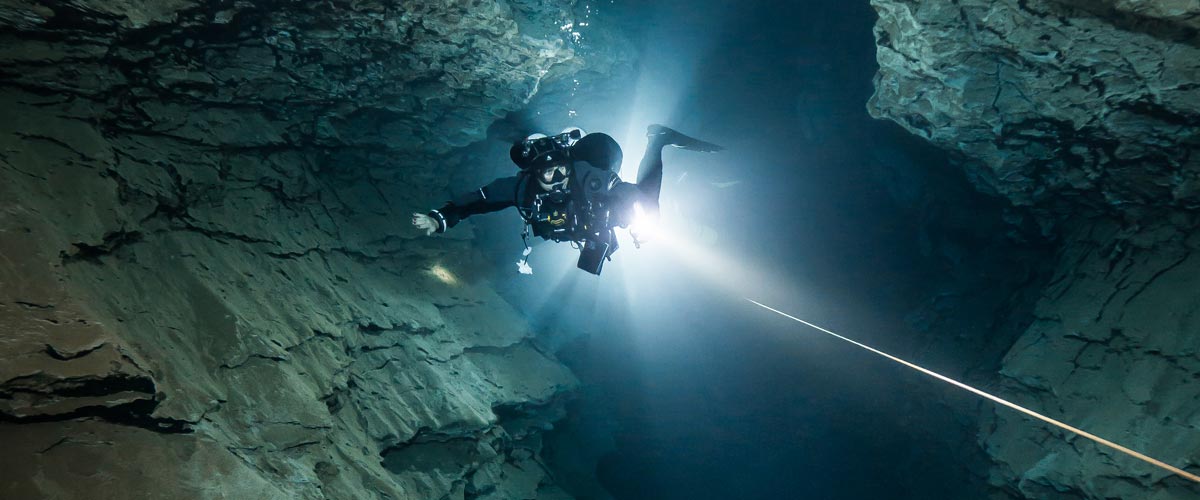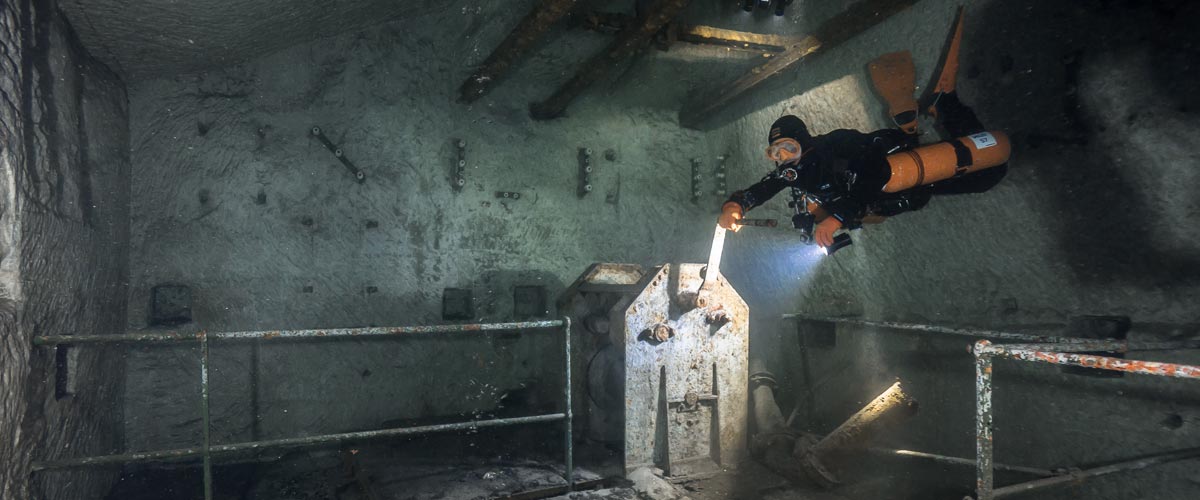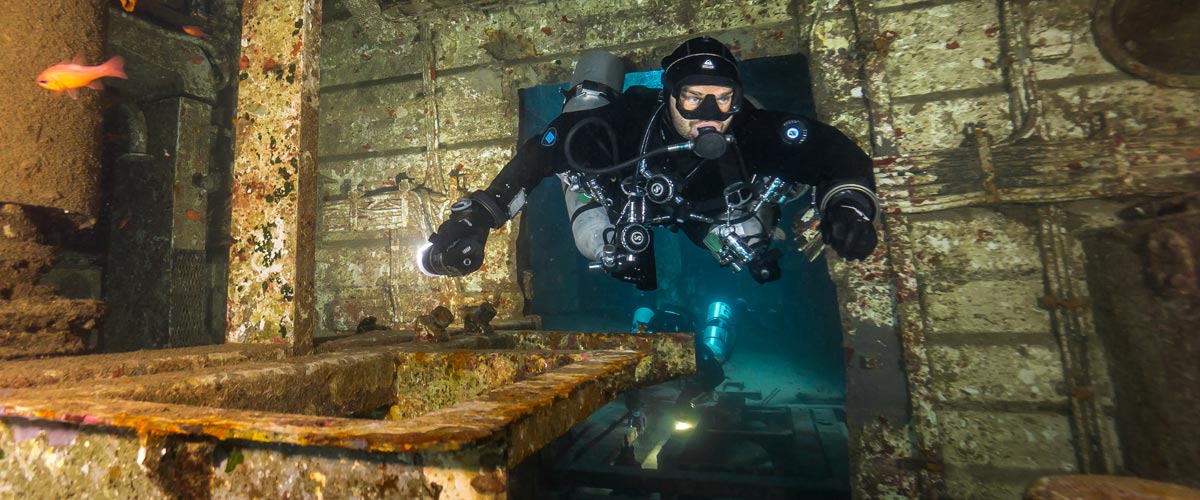Dive Training Blogs
Life’s Abyss and then you dive: will humans ever explore the deepest depths in person?

We humans are remarkable and our dreams become a reality soon after an inventor puts their thinking caps on. We have taught ourselves to fly like birds, climb like monkeys and dig like moles. Why not swim like a fish?
Scuba diving does allow us to breathe underwater, but only at depths a fraction the depth of the sea. Our inability to conquer the “bends” or decompression sickness means that diving below 70 meters is still astronomically dangerous and only a handful of experts and highly trained individuals have reached the deeper depths. Super deep diving is so dangerous that more people have walked on the moon than have descended past the 240m mark. Considering that the deepest part of the ocean is 11,030 meters I would say that the record set last year by Ahmed Gamal Gabr of 332.35 meters (amazing, don’t get me wrong) is just a drop in the ocean.
How can we get deeper? Well, an amazing American inventor believes that the answer to this problem is liquid oxygen. Arnold Lande, a retired heart and lung surgeon, has patented a suit that will allow humans to breathe “liquid air”. This is a liquid that has been highly enriched with oxygen molecules and once we overcome the gag reflex Lande says that our lungs are more than capable of taking oxygen from a solution. Once the oxygenated liquid is inside your lungs it would feel just like breathing normal air.
Crazy isn’t it!
Nitrox eat your heart out!
So how does it work? Lande’s brain child is a scuba unit that would allow the diver to inhale highly-oxygenated perfluorocarbons (PFC’s), which is a type of liquid that can dissolve enormous quantities of gas. This liquid would be contained within a helmet that replaces all the air in the nose, lungs and ear cavities.
The waste gas CO2, which is normally exhaled in the out breath, would be removed by attaching a mechanical gill to the femoral vein in the leg and thus scrubbed from our system.
This remarkable piece of tech would eliminate the worry of decompression sickness or the “the bends”, which is the often fatal condition of dissolved nitrogen in the blood under pressure coming out of solution upon our resurfacing. It has the potential to make much deeper water accessible, which is so exciting!
I know, it still sounds like science fiction – but it’s not. Liquid ventilation is already used by a handful of cutting edge hospitals for highly premature babies. Infants born before 28 weeks often have lungs that are not fully developed, and are unable to adjust from the liquid environment of the womb to breathing gaseous air. Their alveoli (the final branching inside the lungs which are the final stage in gas transfer to the blood) lack vital surfactants which stop the tiny cavities from sticking together when we exhale. Breathing this liquid increases their chance of survival from 5% to a whopping 60%. If a baby the size of your palm can do it, then surely so can we.
Perhaps the most appealing potential of this method of diving is the lack of decompression time needed. Ahmed Gamal Gabr took just 12 minutes to get to his record depth, but a huge 15 hours to come up. This is due to the extremely high concentrations of normally inert gasses such as nitrogen. He had to come up this slowly or he would have simply fizzed up, and his blood would have filled with dangerous nitrogen bubbles that would have surely killed him. If he had used the liquid he could have come up in seconds. Test have been carried out on animals, taking them down to 1000ft and then decompressing them in 0.5 seconds. No signs of decompression sickness were reported. This is because high concentrations of gasses are not needed – the liquid can simply be infused with the exact amount of oxygen needed for the dive.
Wow!
No bends.
No Oxygen toxicity.
No narcosis.
Sign me up!
There has to be a down side right? The only one reported has been from navy seals who experienced stress fractures on their rib cages due to the liquid being heavy to breathe. This was overcome by Lande using medical armour for the diaphragm – strengthening it to make the liquid easier to breathe.
This may all sound a little extreme, but the potential gains are huge. Test subjects are needed and risks are bound to reveal themselves, but we must remember that humans have surpassed many previously thought unsurmountable obstacles. We have climbed the highest mountains, we have been into space – surely it is time for the deepest depths to be explored by man face to face.
Alexandra owns and works at www.scuba-monkey.com.
If/when this form of diving becomes a reality, are you up for it? Let us know your thoughts in the comments section below.
Blogs
Intro to Tech: What is it about?
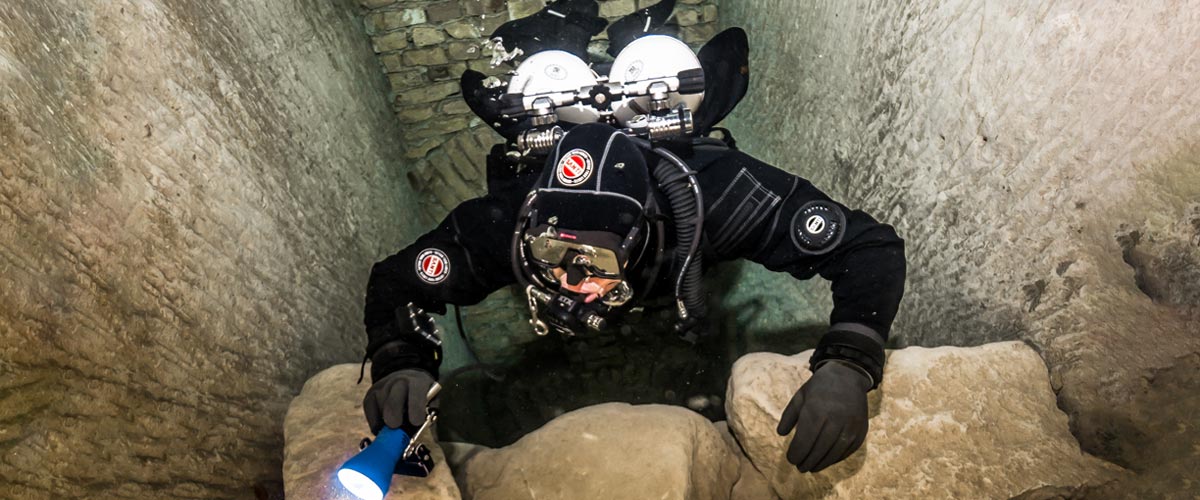
Article by José Pablo Mir
Pictures by Cezary Abramowski
The world of technical diving is exciting. It opens the door to new sites, depths, and bottom times. More importantly, it opens our minds to a new way of planning, facing, and experiencing dives, even those not purely technical.
Becoming a technical diver is a process, and like in other aspects of life, we should find the proper entry point that suits us best based on our knowledge and experience. The Introduction to Technical Diving course from TDI -the world’s largest and most recognized technical diving teaching organization- is the best option for divers who have yet to gain experience in the fundamental aspects of this new practice. The course’s content and its embrace of new techniques and technologies make it possible to acquire a solid foundation to learn and gain experience in this practice properly.
Becoming a technical diver is not something that happens overnight, whether deciding to become one or receiving a certification card stating we are now technical divers. It is a slow process extending farther away than any introductory course. It requires effort and dedication. But it will bring us satisfaction from day one -or two.
It is a matter of mentality
First, we must understand and accept that technical diving, involving greater depths, longer bottom times, exotic gases, virtual or real ceilings, and more, comes with higher levels of risk than the sport diving we have been practicing until now.
Although this discussion usually starts with a warning about risks, as I’ve done in the previous sentence, our practice is not a game of chance.
Technical diving is a rational activity that requires maturity and good judgment, and we will put everything into ensuring that each dive is a successful one -meaning we return from it safe and sound. With this understanding, we will strive to establish a mental attitude more aligned with our practice and its realities.
This new “technical diver” mindset we will develop will lead us to be more cautious in our executions, more analytical in our plans, more rational in our strategies, and more detailed in our procedures.
Experience will keep teaching us to know ourselves better, to keep our anxiety and other emotions under control, and to manage our impulses. Over time, our senses will sharpen, and we will be more attentive to the particulars of the situation we find ourselves in.
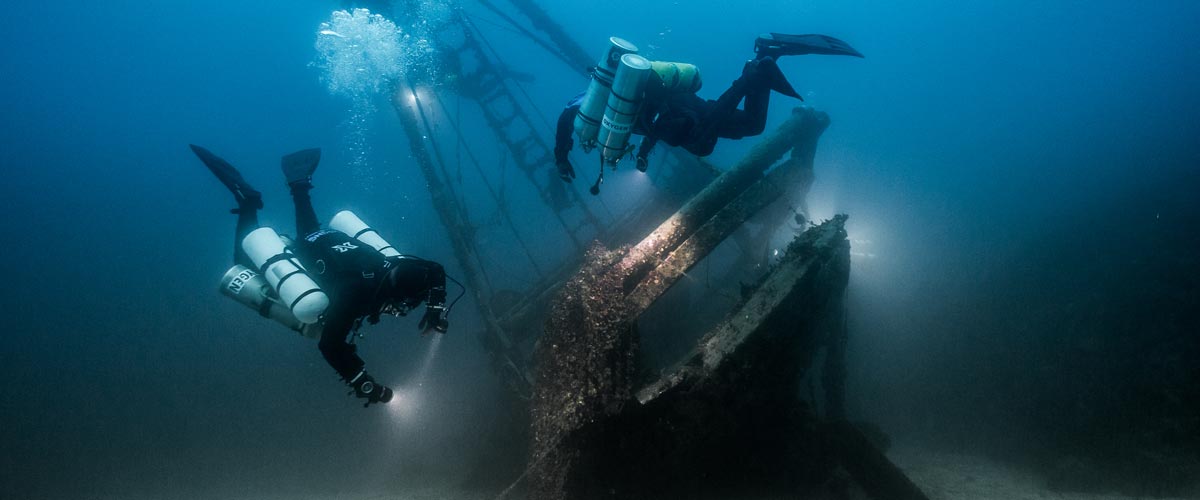
Strategies and procedures
Our strategies, those broad guiding lines tracing the path to follow, from how to approach planning to where, with what, and how we are willing to get there, will be more specific and more practical. Not because they magically become so, but because we will consciously and deliberately frame them that way.
We will establish clear, concise, and realistic procedures. Not only for the undesirable situations that may present themselves but also for those that are part of our dive objectives.
Even though, as technical divers, we often use equipment different from what we were previously accustomed to, it is essential to note that the gear does not make the diver. In a way, we could consider such equipment as the necessary tools to implement what our goal seeks to achieve, according to our strategies and procedures.
Technique plays an important role
We must put our greatest effort into learning and perfecting the different techniques we will be acquiring. Buoyancy, trim, propulsion, cylinder handling, deploying DSMBs and lift bags, valve drills, and more are essential skills we must begin to master to progress in our art. What we cannot do, when we need to do it, can harm us.
Our techniques must be effective and achieve the purpose for which they were devised. But they must also be efficient and require the least resources possible, including the time they take and the effort they demand. Effectiveness and efficiency will prevail over beauty and other considerations that may come to mind, although none of them should be mutually exclusive. A technique executed efficiently and effectively tends to have an inherent beauty.
Refining techniques is a lifelong mission. Some of them will be easy to master from the go; others, on the other hand, will be our life mission and will require many repetitions just to resemble the idea we have in mind of how they should be executed.
We must consider the environment
Our learning, the needs and musts of the practice we engage in, the experience we gradually gain, our strategies and procedures, and even our equipment and tools change with the environment.
Diving in the ocean, everything about us must be suitable for ocean dives. Conditions there rarely emulate those found in a pool, lake, or river. Variable winds and currents, greater depths, visibility conditions, other divers with uncertain skills around us, marine life, maritime traffic, distance from the coast, and many other factors add complexity and uncertainty.
It is never necessary to master the pool on the first day, but planning and aspiring to gradually cope with the ocean’s conditions is essential.
The cost of good training
We are aware that our resources are often scarce in relation to the possibilities of use we could give them if they were not. To a greater or lesser extent, we are part of the economic reality in which we are embedded.
Fortunately, the cost of good technical diver training is not an entry barrier. Comparing training and equipment costs, we see that the former are generally lower. Yes, lower cost for personalized service, essential to our future
performance and safety, than for a series of mass-produced products that are mere, albeit necessary, tools for an end.
The value of good training
The value of the training we received encompasses a range of characteristics, from emotional and methodological to technical and technological. TDI and its Introduction to Technical Diving course offer a deep and modern approach, with a teaching strategy that aims to create thinking divers, not merely obedient ones.
As technical divers, our knowledge is our primary tool. In this type of activity, what we don’t know can harm us.
Is this course optional?
Unfortunately, the fact that this Introduction to Technical Diving course is not a prerequisite for any subsequent training is an invitation to consider it optional. And we all know what usually happens to “optional” under budget constraints.
However, this course should be seen as optional only by those divers who are somehow familiar with the use of technical equipment, who have a mindset more in line with the requirements of this type of diving, who plan and execute the dives the proper “technical” way, who know their gas consumption rate, who are not intimidated by non-decompression tables, who feel comfortable using their dive computers, and know the techniques and have at least an acceptable level of buoyancy, positioning, and propulsion. Those can go straight to a more advanced training course, such as TDI’s Advanced Nitrox.
We must ask ourselves whether or not we are in that group.
Remember our goal: to have fun
Recreational diving is our passion. Jumping into the water carrying heavy equipment and having properly dotted our I’s and crossed our T’s have only one ultimate goal: fun. This is the activity we have chosen as a hobby. We must enjoy it; it must give us pleasure and make us vibrate.
Having a good time is not optional!
Blogs
Four opportunities to go pro in 2024 with Dive Friends Bonaire
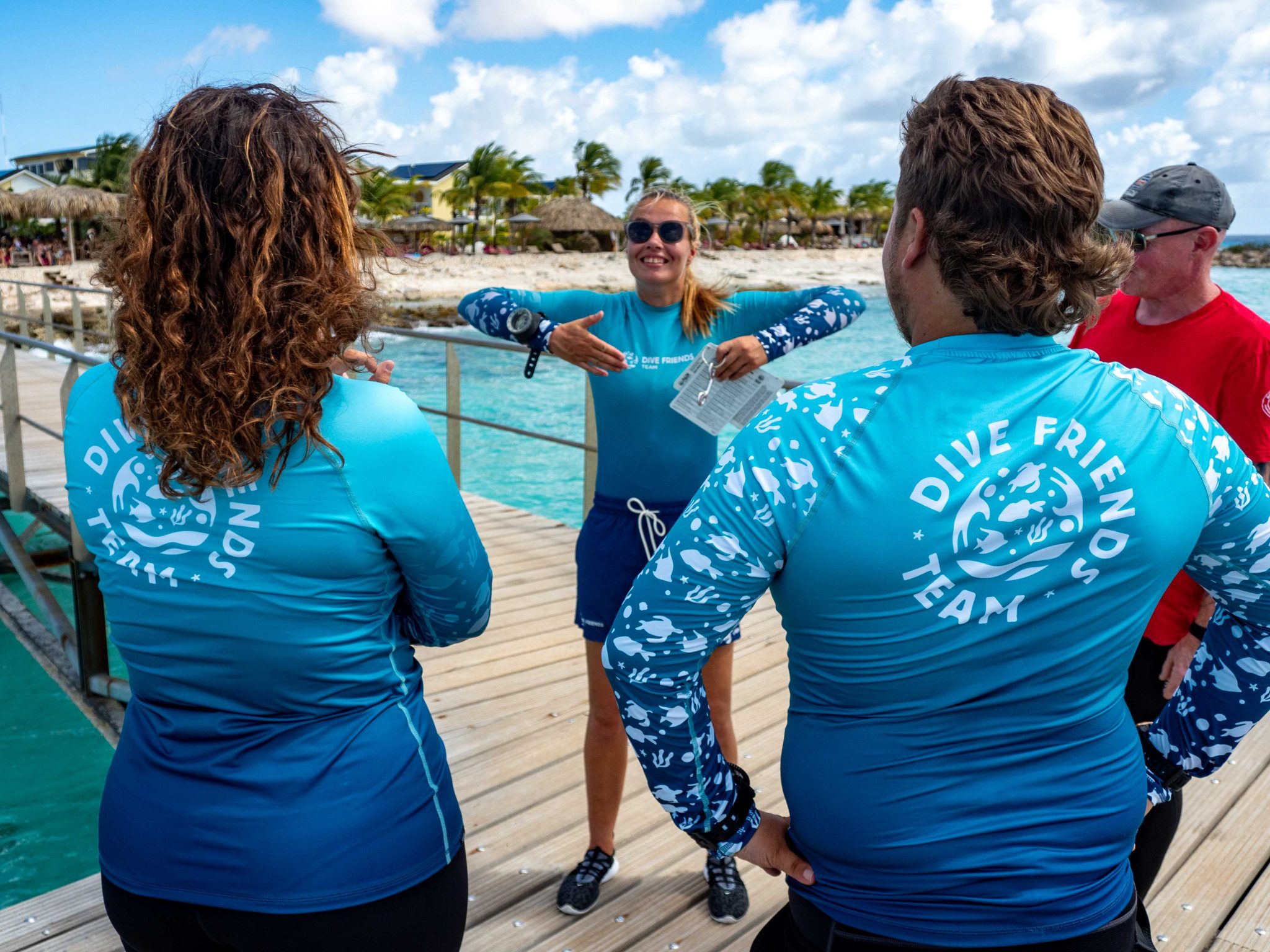
Dive Friends teaches the Instructor Development Course (IDC) several times a year to students who are eager to share their passion for diving with the world.
Dive Friends is known for the personal approach throughout the course. Their in-house course director will lead the students through every essential step, mentoring them to achieve their fullest potential as a dive instructor.
Applications for the following IDC start dates are now open:
- 12 April
- 5 July,
- 20 September
- 29 November
Partnership with Casita Palma
If the student opts for the IDC-Deluxe or IDC-Supreme package, their accommodation will be arranged for them at Casita Palma. This small and quiet resort is within walking distance from Dive Friends Bonaire’s main dive shop location and has everything you need to relax after an intense day of IDC training. Breakfast is included, so the student will always be fuelled and ready for their day.
Contact Dive Friends Bonaire’s Course Director Eddy for more information: coursedirector@divefriendsbonaire.com.
-

 News3 months ago
News3 months agoHone your underwater photography skills with Alphamarine Photography at Red Sea Diving Safari in March
-

 News3 months ago
News3 months agoCapturing Critters in Lembeh Underwater Photography Workshop 2024: Event Roundup
-

 Marine Life & Conservation Blogs2 months ago
Marine Life & Conservation Blogs2 months agoCreature Feature: Swell Sharks
-

 Blogs2 months ago
Blogs2 months agoMurex Resorts: Passport to Paradise!
-

 Blogs2 months ago
Blogs2 months agoDiver Discovering Whale Skeletons Beneath Ice Judged World’s Best Underwater Photograph
-

 Gear Reviews2 months ago
Gear Reviews2 months agoGear Review: Oceanic+ Dive Housing for iPhone
-

 Marine Life & Conservation2 months ago
Marine Life & Conservation2 months agoSave the Manatee Club launches brand new webcams at Silver Springs State Park, Florida
-

 News3 months ago
News3 months agoWorld’s Best Underwater Photographers Unveil Breathtaking Images at World Shootout 2023















